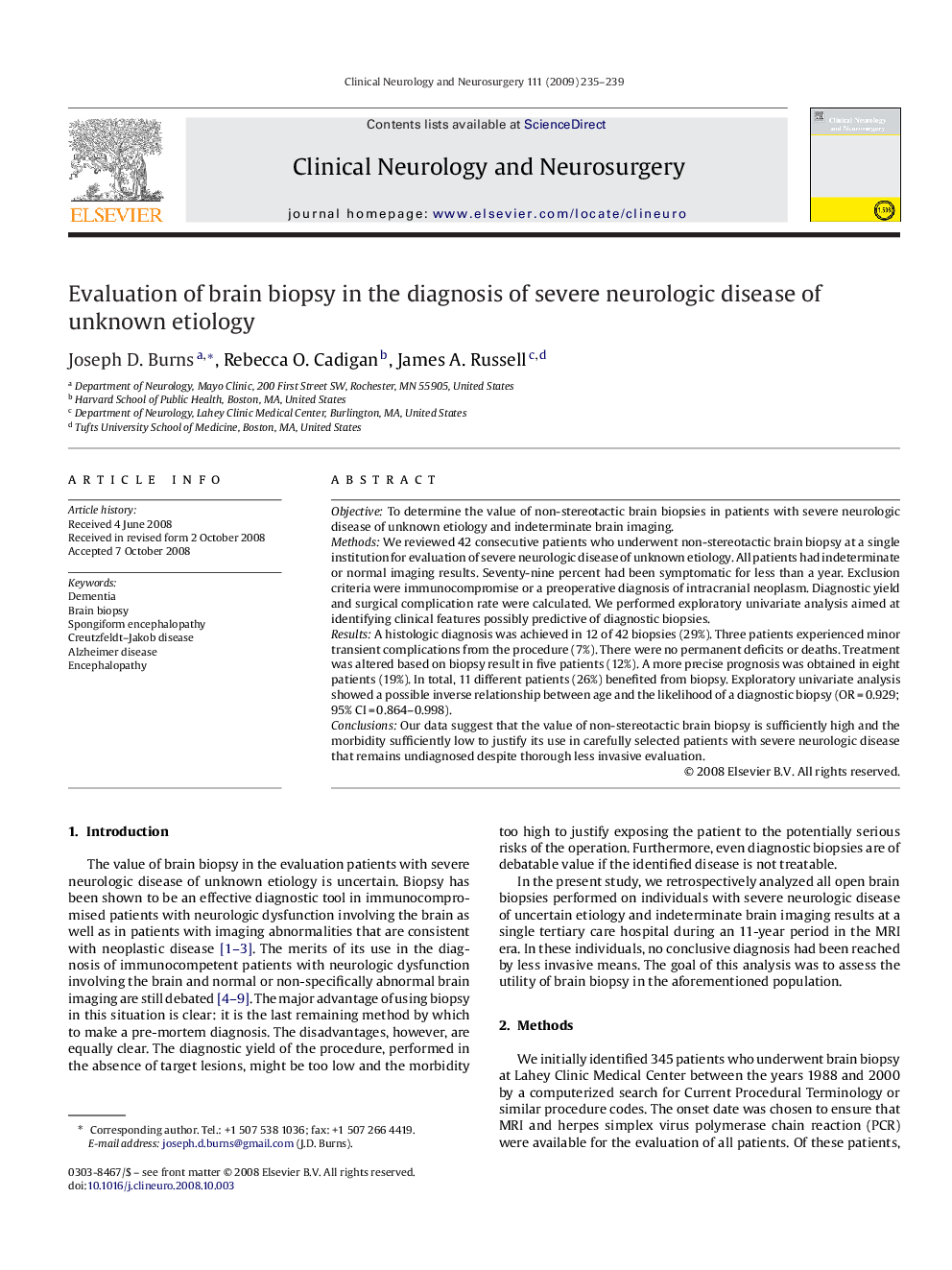| Article ID | Journal | Published Year | Pages | File Type |
|---|---|---|---|---|
| 3041884 | Clinical Neurology and Neurosurgery | 2009 | 5 Pages |
ObjectiveTo determine the value of non-stereotactic brain biopsies in patients with severe neurologic disease of unknown etiology and indeterminate brain imaging.MethodsWe reviewed 42 consecutive patients who underwent non-stereotactic brain biopsy at a single institution for evaluation of severe neurologic disease of unknown etiology. All patients had indeterminate or normal imaging results. Seventy-nine percent had been symptomatic for less than a year. Exclusion criteria were immunocompromise or a preoperative diagnosis of intracranial neoplasm. Diagnostic yield and surgical complication rate were calculated. We performed exploratory univariate analysis aimed at identifying clinical features possibly predictive of diagnostic biopsies.ResultsA histologic diagnosis was achieved in 12 of 42 biopsies (29%). Three patients experienced minor transient complications from the procedure (7%). There were no permanent deficits or deaths. Treatment was altered based on biopsy result in five patients (12%). A more precise prognosis was obtained in eight patients (19%). In total, 11 different patients (26%) benefited from biopsy. Exploratory univariate analysis showed a possible inverse relationship between age and the likelihood of a diagnostic biopsy (OR = 0.929; 95% CI = 0.864–0.998).ConclusionsOur data suggest that the value of non-stereotactic brain biopsy is sufficiently high and the morbidity sufficiently low to justify its use in carefully selected patients with severe neurologic disease that remains undiagnosed despite thorough less invasive evaluation.
